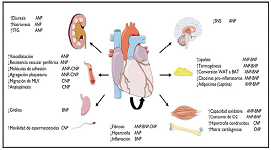
Asia Pacific Academy of Science Pte. Ltd. (APACSCI) specializes in international journal publishing. APACSCI adopts the open access publishing model and provides an important communication bridge for academic groups whose interest fields include engineering, technology, medicine, computer, mathematics, agriculture and forestry, and environment.

Current situation and trend of cardiovascular disease burden in China from a global perspective
Vol 2, Issue 1, 2021
Download PDF
Abstract
Objective: Based on the global burden of disease (GBD) 2019 study, to analyze the epidemic trend and risk factors of cardiovascular disease (CVD) in China by comparing the world, the United States, Japan and India. Methods data were obtained from the global health data exchange (ghdx) database. The prevalence, morbidity, mortality, disability adjusted life year (DALY) and other disease burden status and main risk factors of CVD in China were analyzed by sex and age; the age standardized rate was used to compare the change trend of CVD disease burden in China, the United States, Japan and India from 1990 to 2019. Results: In 2019, the number of CVD patients in China was 12 billion, with 123.41 million new cases and 458.43 million deaths; the prevalence, incidence rate, mortality and Daly rates increased from 423,543/100,000, 44,781/100,000, 20,475/100,000 and 509,103/100,000 in 1990 to 84,608/100,000, 86,765/100,000, 32,230/100,000 and 646,347/100,000 in 2019 respectively. The prevalence, incidence rate, mortality and Daly rate increased with age, and the burden of CVD in men was higher than that in women. In addition, the top 4 risk factors for CVD in China in 2019 are hypertension, diet, air pollution and tobacco, which lead to higher CVD disease burden than the global average. Conclusion: due to hypertension, dietary factors, air pollution, tobacco and other reasons, coupled with the rapid aging of the population, the disease burden of CVD in China is still very serious, which needs to be paid attention to by relevant departments.
Keywords
References
- GBD 2019 Diseases and Injuries Collaborators. Global burden of 369 diseases and injuries in 204 countries and territories, 1990–2019: a systematic analysis for the Global Burden of Disease Study 2019. Lancet. 2020; 396(10258): 1204–1222.
- GBD 2017 Causes of Death Collaborators. Global, regional, and national age-sex-specific mortality for 282 causes of death in 195 countries and territories, 1980–2017: a systematic analysis for the Global Burden of Disease Study 2017. Lancet. 2018; 392(10159): 1736–1788.
- Yu C, Cui F. Research on global disease burden and Its Enlightenment to China. Public health and preventive medicine. 2014; 25(2): 1–5.
- Liu M, Liu J, Wang W, et al Gender difference analysis of cardiovascular disease deaths in Chinese population from 2004 to 2011 (Chinese). China chronic disease prevention and control. 2014; 22(3): 267–269.
- Walli-Attaei M, Joseph P, Rosengren A, et al. Variations between women and men in risk factors, treatments, cardiovascular disease incidence, and death in 27 high-income, middle-income, and low-income countries: a prospective cohort study. Lancet. 2020; 396(10244): 97–109.
- Fang EF, Xie C, Schenkel JA, et al. A research agenda for ageing in China in the 21st century (2nd edition): Focusing on basic and translational research, long-term care, policy and social networks. Ageing Res Rev. 2020; (64): 101–174.
- Du J, Li Y, Li Y. Translational medicine research on prevention and treatment of cardiovascular diseases - dilemma of precise prevention and treatment of coronary heart disease in young people and translational medicine research program (Chinese). Chinese Journal of arteriosclerosis. 2021; 29(2): 93–97.
- Liu J, Wang W, Liu J, et al. Current status of cardiovascular risk factors and blood pressure control in outpatients with hypertension (Chinese). Chinese Journal of cardiovascular diseases. 2013; 41(12): 1050–1054.
- Wang M, Gong J, Guo Y, et al Analysis on Influencing Factors of stroke symptoms in middle-aged and elderly hypertensive patients in community (Chinese). Public health and preventive medicine. 2021; 32(1): 72–75.
- Yu C, Luo L, Li M, et al The severity of stroke burden in China from a global perspective (Chinese). Public health and preventive medicine. 2016; 27(1): 1–5.
- China Cardiovascular Health and Disease Report Compilation Group. China cardiovascular health and disease report compilation group summary of China cardiovascular health and disease report 2020 (Chinese). Chinese Journal of circulation. 2021; 36(6): 521–545.
- Wang L, Gao P, Zhang M, et al. Prevalence and Ethnic Pattern of Diabetes and Prediabetes in China in 2013. JAMA. 2017; 317(24): 2515–2523.
- Li Y, Tent D, Shi X, et al. Prevalence of diabetes recorded in mainland China using 2018 diagnostic criteria from the American Diabetes Association: national cross sectional study. BMJ. 2020; (369): 997.
- Zjap D, Liu J, Wang M, et al. Epidemiology of cardiovascular disease in China: current features and implications. Nat Rev Cardiol. 2019; 16(4): 203–212.
- National Health Commission. Nutrition and chronic diseases of Chinese residents (2020). Journal of nutrition. 2020; 42(6): 521.
- Gu D, Weng J, Lu X. Guidelines for the prevention of cardiovascular metabolic diseases by healthy lifestyle in China (Chinese). Chinese Journal of circulation. 2020; 35(3): 209–230.
- China Cardiovascular Health and Disease Report Compilation Group (Chinese). China cardiovascular health and disease report compilation group summary of China cardiovascular health and disease report 2019. Chinese Journal of circulation. 2020; 35(9): 833–854.
- Li Y, Liu J, Li J. Expert consensus on air pollution and cardiovascular disease (Chinese). Chinese Journal of circulation. 2021; 36(1): 14–21.
- Liang F, Yang X, Liu F, et al. Long-term exposure to ambient fine particulate matter and incidence of diabetes in China: A cohort study. Environ Int. 2019; (126): 568-575.
- Huang K, Yang X, Liang F, et al. Long-Term Exposure to Fine Particulate Matter and Hypertension Incidence in China. Hypertension. 2019; 73(6): 1195–1201.
Supporting Agencies
Copyright (c) 2021 Yanxiaoxiang Wang, Jianjun Bai, Chuanhua Yu

This work is licensed under a Creative Commons Attribution 4.0 International License.

This site is licensed under a Creative Commons Attribution 4.0 International License (CC BY 4.0).

Prof. Prakash Deedwania
University of California,
San Francisco, United States




